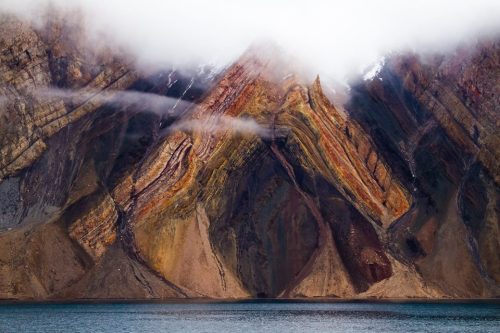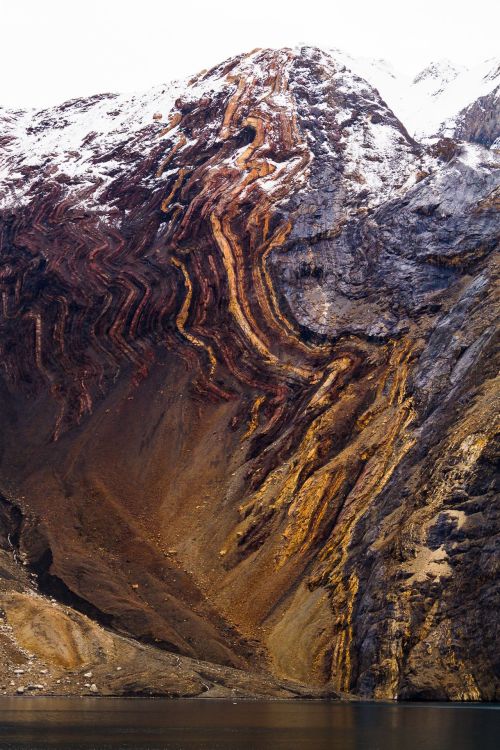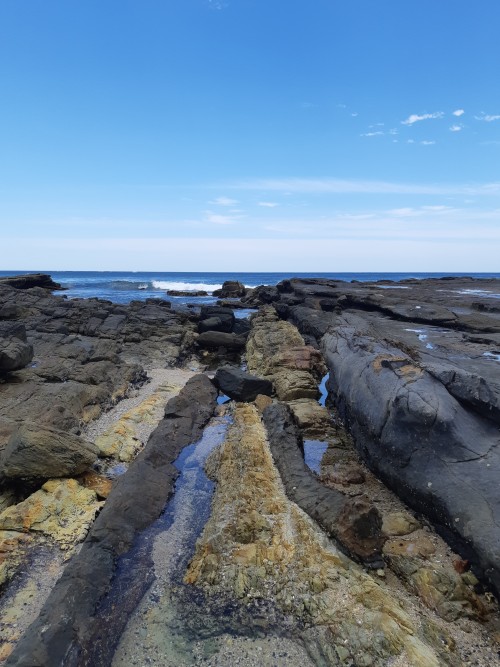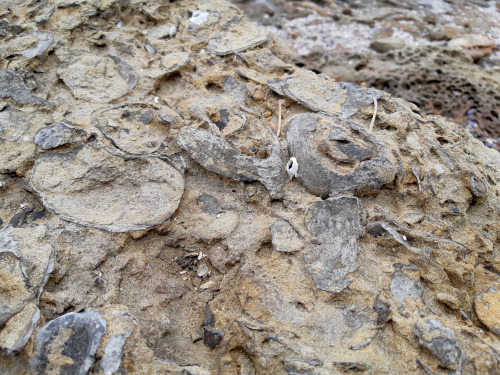#geoscience
Dramatic folding
Sedimentary layers can lead to beautiful sights. In these pictures they spectacularly fold along the sea and display wonderful colors. These formations can be found on Greenland’s east coast in the Kejser Franz Joseph Fjord and in the King Oscar Fjord.
Post link
ALMA Shows Volcanic Impact on Io’s Atmosphere
Io is the most volcanically active moon in our solar system. It hosts more than 400 active volcanoes, spewing out sulfur gases that give Io its yellow-white-orange-red colors when they freeze out on its surface.
Credit: ALMA (ESO/NAOJ/NRAO), I. de Pater et al.; NRAO/AUI NSF, S. Dagnello; NASA/JPL/Space Science Institute
ViaThe National Radio Astronomy Observatory
Post link
An artist’s concept of the skull and brain of the sauropodomorph Buriolestes, a small, late Triassicdinosaur.
Credit: Márcio L. Castro and Rodrigo Temp Müller
ViaThe New York Times:We’ve Rarely Seen a Dinosaur Brain Like This Before
Post link

Digging for gifts for your science minded friend? Look no further than the cutest fossil from Permian! https://paleopals.square.site/
We are so excited to unveil the latest season of Breakthrough, a short film anthology from Science Friday and Howard Hughes Medical Institute (HHMI) that follows women working at the forefront of their fields. Breakthrough hopes to inspire a future generation of women to lead careers in STEM. New episodes drop weekly OR catch the entire series now on Alamo On Demand.
Learn more at BreakthroughFilms.org. If you are an educator or career counselor, don’t forget to check out the Breakthrough Inclusive Action Tool Kit.
The dark coloured rock is a sedimentary rock and the bright coloured rock is an igneous rock (used to be a magma) which intruded the sedimentary rock. This intrusive igneous rock is called dyke or dike.
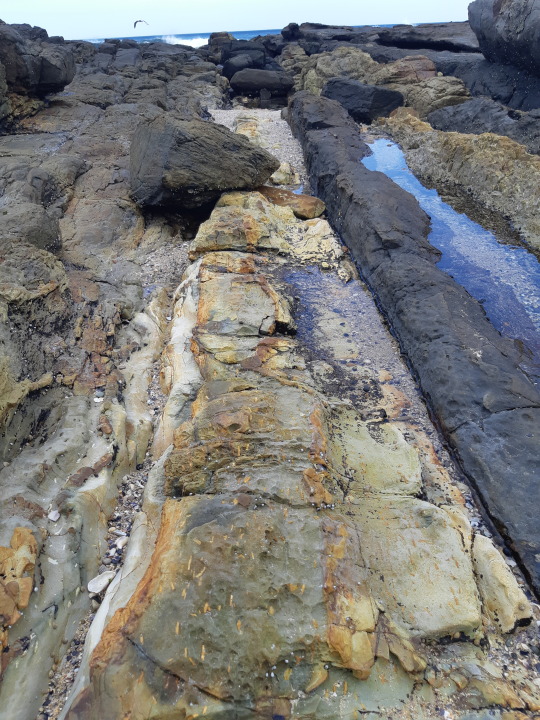
This dyke is bright coloured because the minerals that make up this rocks are breaking down to clays due to exposure to water and oxygen. Original minerals in rocks such as this one are usually black and so dykes often appear dark (but, definitely not a rule!). However, when these minerals breakdown they produce clay minerals, which are usually bright coloured.

The white-orange marks that you can see on the close-up image of the dyke used to be minerals that floated in the magma before it turned into a igneous rock. These minerals were called plagioclase, however, now these too have been converted into clays.
You might notice that approximately all these tabular minerals are aligned in one up-down direction. This the tell-tale sign of magma movement which aligned the mineral according to its flow direction. From this photograph you can narrow down the magma movement direction options to either to up-down and towards-you/away-from-you.
Southcoast NSW, Australia
Post link
This post is dedicated to YOU!
I am very happy to let you guys know that this is the 200th post on the Dr Rock Club blog. So with this post I wanted to say ‘Thank you’ to all of you for your support!
Let’s celebrate this special occasion with a layer CAKE stratigraphy!
Scene from along Australia’s south coast
Post link
Ancient sea bottom exposed along a modern seaside rocky platform. This immense amount of fossilized shells is preserved in ~250 million year old sea sediments which would have been a feeding grounds for all these bivalves.
South coast, NSW, Australia.
Post link
Collapsed chamber with sulphur coated walls from volcanic gases. Sulphur is picked up from the rocks deep underground by the steam, that was heated by the magma ponding at depths. At the surface, exsolving gases precipitate the sulphur as the gases mix with the atmosphere.
Wai-O-Tapu, New Zealand
Post link
Rain droplets preserved in dry desert sand. These tiny impressions, if buried by more sand, can be preserved for hundreds of millions of years and provide geologists with important clue that the rock containing them formed on the surface rather than under water.
In other words, it is a trace fossil of rain.
Post link
Mineral under pressure
This is a photograph of mineral called pyroxene and was taken with a petrographic microscope, and it captures megascale forces of the tectonic processes on the microscale level. This mineral is about 1.5 mm and was found in a rock called greenschist.
This rock is heavily deformed, sheared, due to the force of the tectonic plates pushing against each other. Imagine one plate being a bread and other a knife, and the rock you are looking at is like a butter being smeared on the toast.
The pyroxene is harder than the rest of the minerals in this rock, and so, as the pressure is applied, the other minerals are deformed and squashed against the pyroxene while it remains largely undamaged.
Example from the Nubra Valley, Ladakh, Himalaya
Post link
I took Intro to Geology in high school, and our mineral identification lab consisted of, I wanna say, about twenty minerals.
I was top of my class and little sixteen year old me thought “Yep. That’s it. That’s all the minerals there are.”
And then, three years later, I took mineralogy.
Boy howdy.


